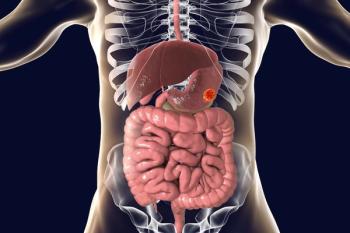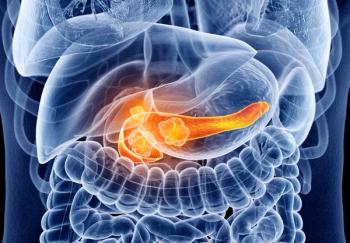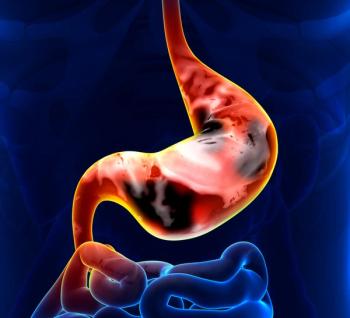
Oncology NEWS International
- Oncology NEWS International Vol 8 No 8
- Volume 8
- Issue 8
Cafe au Lait Spots Linked to Early-Onset Colorectal Cancer
ORLANDO-Researchers from the Johns Hopkins University Hereditary Colorectal Cancer Registry have identified what they believe is a previously unrecognized hereditary cancer syndrome. Patients with this syndrome, a variant of hereditary nonpolyposis colorectal cancer (HNPCC), exhibit cafe au lait spots and develop their malignancies at a much earlier age than do other HNPCC patients.
ORLANDOResearchers from the Johns Hopkins University Hereditary Colorectal Cancer Registry have identified what they believe is a previously unrecognized hereditary cancer syndrome. Patients with this syndrome, a variant of hereditary nonpolyposis colorectal cancer (HNPCC), exhibit cafe au lait spots and develop their malignancies at a much earlier age than do other HNPCC patients.
These pigmented lesions have not previously been considered an extracolonic manifestation of hereditary colorectal cancer, although there have been reports of the combination in the literature. (Cafe au lait spots have long been considered a classic manifestation of neurofibromatosis.) Jill Brensinger, MS, CGC, a genetic counselor at Johns Hopkins, presented a poster on the research during the Digestive Disease Week meeting.
We happened upon two families with cafe au lait spots and very-early-onset colon cancer, Ms. Brensinger said. We then decided to search the literature for other families that were affected by cafe au lait spots and either colon polyps or cancer. The search identified 25 such families.
The researchers then compared those 25 families with 55 families with colon polyps and/or cancer and no cafe au lait spots. The mean age of the onset of colorectal adenomas in the families with cafe au lait spots was 15.7 years, while in families without cafe au lait spots, it was 23.6 years (P = .003).
Oligopolyposis More Likely
In families with cafe au lait spots, individuals with polyps were far more likely to exhibit oligopolyposis (less than 100 polyps) when they had their first colorectal examination rather than the polyposis (100 or more polyps) that was more typical of the families without cafe au lait spots (P < .001).
Also, families with cafe au lait spots were far more likely to have brain tumors diagnosed at a young age (P = .01). Almost half (46.7%) of the people affected by cancer in the families with cafe au lait spots had brain tumors, and they were diagnosed at a mean age of 16.5 years.
Ms. Brensinger also reported that the colorectal cancer patients with cafe au lait spots ran an increased risk of hematologic malignancies.
Mismatch Repair Gene Mutations
The researchers believe that a mutation of the mismatch repair genes PMS2 or MLH1 may cause the newly identified syndrome. They suggest that germ-line testing for mutations in these two genes, and perhaps other mismatch repair genes, may help in the surveillance of families with cafe au lait spots and early-onset colorectal neoplasia.
Articles in this issue
over 16 years ago
False positives frequent in CT lung cancer screening trialover 26 years ago
Stereotactic Core Biopsy Establishes Many Prognostic Factorsover 26 years ago
Breast Cancer Prevention With Tamoxifen Appears Cost-Effectiveover 26 years ago
NCI Discovers Gene Variations From Existing Databasesover 26 years ago
CPDR Unveils First Center Solely for Prostate Cancer Researchover 26 years ago
Going Beyond CHOP in Advanced Large-Cell Lymphomaover 26 years ago
Memorial Sloan-Kettering Opens Rockefeller Outpatient Pavilionover 26 years ago
Ernst Wynder, Pioneer in Preventive Medicineover 26 years ago
AHCPR Plans Health Care Market, Managed Care Research Centersover 26 years ago
NSAIDs May Protect Against Common GI CancersNewsletter
Stay up to date on recent advances in the multidisciplinary approach to cancer.

















































































